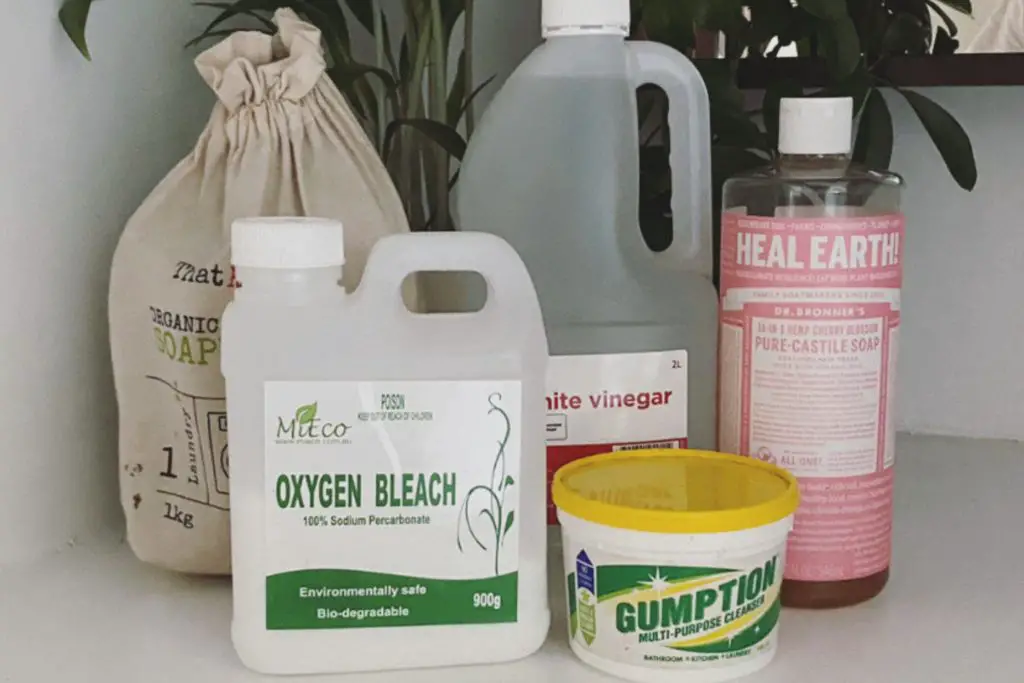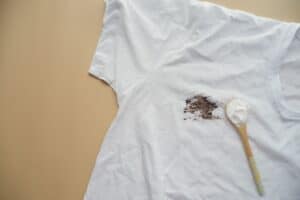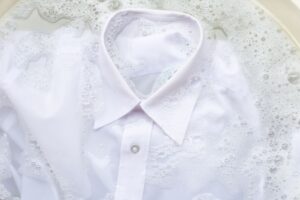My Environmentally Friendly Cleaning Kit

Cleaning products tend to take up one long aisle in the supermarket and it’s crazy! The number of packaged products that exist just so we can get rid of the oil, dirt and dust that accumulates in the home is mind-boggling.
Some of it plays into our fears – promising a bacteria-free life, protecting you from harmful germs that will make you sick.
Some of it plays into our lack of knowledge – leading us to believe that each product has been specially formulated to tackle the unique challenges presented in each room.
And I won’t even go on about how the products designed to protect us from harmful bacteria are also harming us with their toxicity – that’s a whole other subject, which I am only just learning about. My resource so far on this topic has been the Low Tox Life blog: https://www.lowtoxlife.com/home-2/
As I mentioned in my blog post about my cleaning schedule, I’m a lazy clean freak. The laziness comes in handy because I tend to push the limits of things, trying to see how far I can go without having to do something. Can I get away with not cleaning the tiles? Turns out, no, not so much – grout is a real pain to clean if you let things build up. Can I get away with not cleaning the sheets every week? Turns out I can, things are just fine if I clean them once a month.
This extends to products – can I get away with using one cleaner for all the rooms in my house? Ummm yes, of course I can. Can I get away with using items used for other purposes? Yes of course, some everyday kitchen pantry items can do double duty.
In previous blog posts, I covered my favourite low tox low impact cleaning products. But here’s a round-up of my cleaning kit**:
- Soap nuts for the laundry
- Castile soap as an all-purpose cleaner
- Gumption as my abrasive
- Vinegar as glass cleaner
- Bicarb as a deodoriser
- Oxygen bleach as a natural bleach alternative
I would add to this washing soda, but I am only just experimenting with using this as a dishwashing powder and washing powder so can’t say this is part of my cleaning arsenal just yet. But once it is, I essentially have all areas of my home covered.
For more information on how I use Gumption and why I think it is environmentally friendly read this blog post (happy to be corrected on this point).
Now about bicarb – I know, it can be used for more than just deodorising the home. In the early 2000’s I grabbed a cleaning book by Shannon Lush and Jennifer Flemming that was hugely popular. They had a cleaning segment on ABC radio where they would dispense their tried and tested solutions to various cleaning problems thrown their way. Their solutions called for two items in pretty much all situations (it seemed!) – vinegar and bicarb. It seemed like there wasn’t anything the two couldn’t do.
I have to admit, I’m not a fan of this as a “solution for everything”.
Bicarb is a base and yes, alkalines (bases) make great cleaners. That’s because most dirt, dust and grime around the home is slightly acidic and alkalines can help neutralise these nasties (see https://hellonest.co/diy-all-purpose-cleaner/ for reference).
But in my life, castile soap is the alkaline cleaner that I reach for because it’s in a liquid form or can be used as a spray.
People love to use it as an abrasive. I personally don’t like to use bicarb in this way – I just find it messy to deal with. I rely on Gumption when I need a cream abrasive – you need a small amount for the same effect and it cleans with half the effort. And with Gumption there is no post-cleaning cleanup – because who want to use something that requires so much cleaning after the fact??? I don’t, which is why I never liked bicarb.
So yeah, I essentially just use bicarb to neutralise odours. Namely, I place bicarb in a small container in both my fridge and under the sink (where I keep my compost bin). Works wonders.
And of course, I use it with vinegar. But for one purpose only – to clean drains. I take the liquid from the bokashi bin (kitchen compost bin) and pour that down the drain (the bacteria in the bokashi liquid is meant to be good at clearing out drains). Since that stuff really stinks, I shake some bicarb down the drain and follow that up with some vinegar. While it’s fizzing away, I take the opportunity to give the sink a scrub. The trick is to scrub while the bicarb and vinegar reaction is happening – if you wait too late, the two chemicals have just neutralised each other and there are no active ingredients to help with cleaning.
I was questioning the effectiveness of this action when I read this blog: https://chemistrycachet.com/the-truth-about-cleaning-with-baking-soda-vinegar/
But then this blog convinced me to continue with this: https://readysetplumb.com.au/clean-clogged-drains-bicarb-soda-vinegar/
While I’m not a huge fan of bicarb as a cleaning product, it may work for you. If you want some ideas to try, have a look at this blog post: https://www.stayathomemum.com.au/houseandhome/diy-cleaning-products/20-ways-to-use-bicarb-around-the-home/ and https://www.goodhousekeeping.com/uk/house-and-home/household-advice/a669645/21-cleaning-problems-you-can-solve-with-bicarbonate-of-soda/
One other product I wanted to mention was oxygen bleach. I get this from Biome and I use this instead of Napisan. Oxygen bleach is just another name for sodium percarbonate. If you look at a bottle of Napisan you will notice that this is the active bleaching agent. I noticed last week that sodium carbonate is noted as the active wash booster in Napisan. Sodium Carbonate can be brought in any major supermarket, sold as washing powder.
As I mentioned before, washing powder a lot more and it is something I will report back on.
** Anyone following me on Instagram knows I have conventional cleaning products in my home. Some because I am still trying to use it up, mostly because my husband is not on board with the low tox alternatives. I’m working on that, experimenting with different recipes that meets his needs. Something to write about another time.




